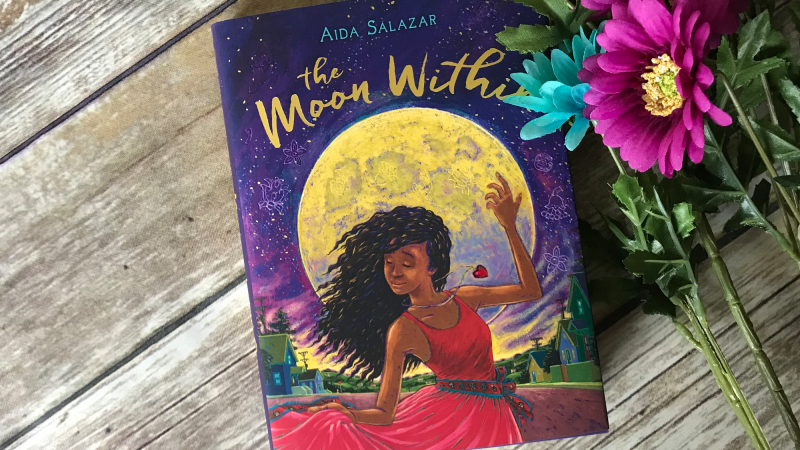The Moon Within is a dazzling story told in brilliant verse of a girl navigating friendship, family, and growing up. Celi Rivera's life swirls with questions. About her changing body. Her first attraction to a boy. And her best friend's exploration of what it means to be genderfluid. But most of all, her mother's insistence she have a moon ceremony when her first period arrives. It's an ancestral Mexica ritual that Mima and her community have reclaimed, but Celi promises she will NOT be participating. Can she find the power within herself to take a stand for who she wants to be?
In celebration of Women’s History Month, we’re excited to share this guest post from debut author Aida Salazar about what inspired her to write The Moon Within.
I was inspired to write The Moon Within as my eleven-year-old daughter began to ask questions about her changing body. As a Xicana feminist, I wanted to offer her a different way into the understanding of this important transformation than I had been given. I wanted her experience to be grounded in body-positive self-knowledge and self-love, in a connection to her ancestry, and in the power that is inherent in all of that beauty.
I’ve been a moon disciple for decades—marveling, exploring, and ritualizing our connection to her—through astrology, astronomy, spirituality, and the study of pre-colonial Mexican history. We held a ceremony to honor my daughter’s menstruation that was informed by this love of the moon. As a writer, I wanted to share our experience of this magical ritual through story with other children.
While there are numerous nonfiction books about menstruation for middle grades, there is a gaping hole in fictional literature for this group. It is very likely (and I say this with a great amount of disbelief and grief) that The Moon Within is the first book in forty-nine years, since Judy Blume’s Are You There God? It’s Me, Margaret, to center menstruation in its narrative. It is the first (again, incredulously and sadly) to ever fictionally reflect menstruation from the Latinx perspective. I was very intentional about sharing ideas of the beauty and power of menstruation Mesoamerican traditions teach us that departed from the often-negative views of our current patriarchal and colonized society. I wanted to reframe the conversation around menstruation by showing what would happen if we, in fact, honored and revered these processes instead.
Furthermore, I sought to challenge readers, my community in particular, in the ways we view gender expansive people. I used Mesoamerican philosophy to help us remember that our pre-colonial ideas of gender were more fluid than the binary that is dominant today and that a more compassionate and respectful way is possible.
In addition, I used my entire family and the San Francisco Bay Area, a place rich with diverse cultural centers and cultural practices, as a sketch for the characters and setting, but the story is fictionalized. My children are bicultural and multiracial, and I wanted to show the nuances in these sorts of intersections. I wanted to show readers that the arts, their own imaginations and expressions, are a wonderful place in which to find agency and strength.



